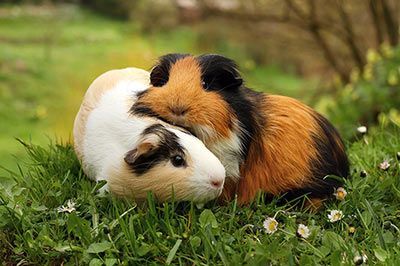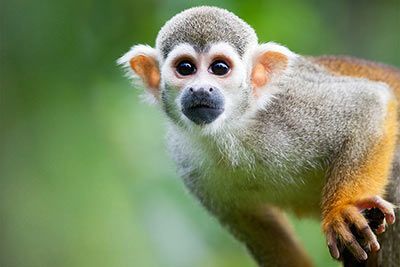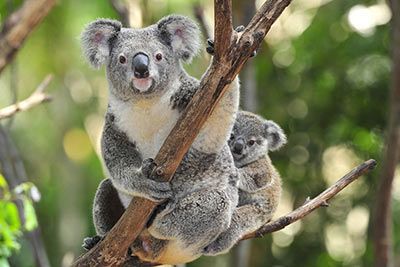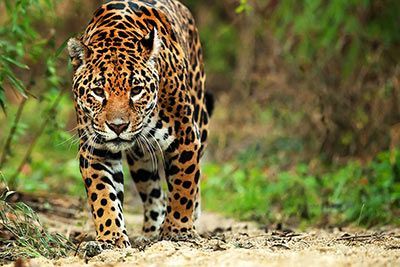Raccoon
Raccoon Facts
| Size | Up to 24 in (60 cm) |
| Speed | Up to 15 mph (24 km/h) |
| Weight | 8-19.8 lb (3.6-9 kg) |
| Lifespan | 12-16 years |
| Food | Omnivore |
| Predators | Foxes, wolves, cougars |
| Habitat | America, Europe |
| Order | Carnivore |
| Family | Procyonidae |
| Scientific name | Procyon lotor |
| Characteristics | Little bear with black fur around the eyes |
Main Characteristics
Raccoons are predators. They are distributed across the US, South America, Europe, Asia, Russia and the Caribbean. They live in forests and near waters.

Species
There are three species: the common North American raccoon, the South American crab-eating raccoon and the Caribbean cozumel raccoon.
Anatomy and Appearance
Black Mask
Raccoons look like little bandits. But up to now they are not known for robbing banks. The black fur around their eyes provides protection against the sunlight. Meerkats use the same trick!
Diet
Raccoons are omnivores. They eat insects, worms, fruits, nuts, fish, amphibians and eggs.
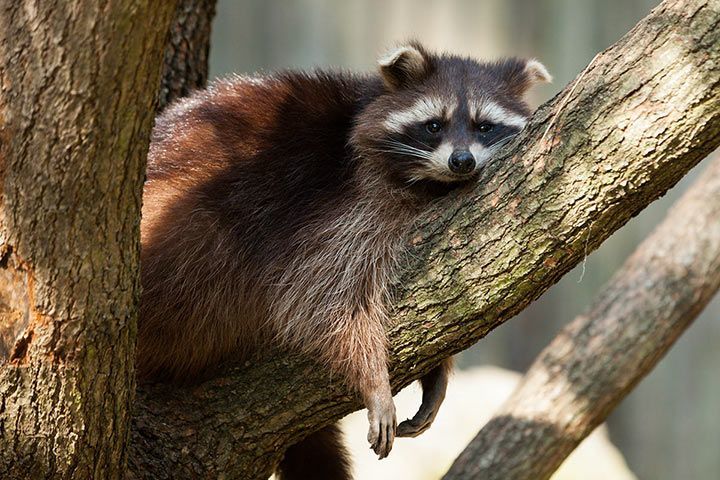
Behavior
Do They Wash Their Food?
For a long time, people believed that raccoons wash their food or soak it with water if it is too dry for them. You can indeed watch raccoons in the zoo doing this. Yet they do it because they are bored and/or because living in the zoo makes them sick. But it is true that raccoons check their food and everything they can get hold of very carefully. They turn every item to and fro and it appears as if they were washing it.
Do They Hibernate?
In colder regions, raccoons sleep and hibernate in small tree or rock caves. Raccoons eat a lot before the icy cold winter starts. They gobble up everything, no matter what it is. Raccoons increase their body weight by about 50%. You never know when you will be short of food! The heaviest raccoon ever put on a scale weighed impressive 62.6 lb (28.4 kg) – about as much as eight male cats, although raccoons are only as big as one (!) male cat.
Are They Dangerous?
Raccoons look cute, but they are very self-conscious animals. When you encounter a raccoons or if it feels threatened, it does not run away, but will rather bite. To ward off a raccoon, it is best to intimidate it by standing up tall and shouting out loud.
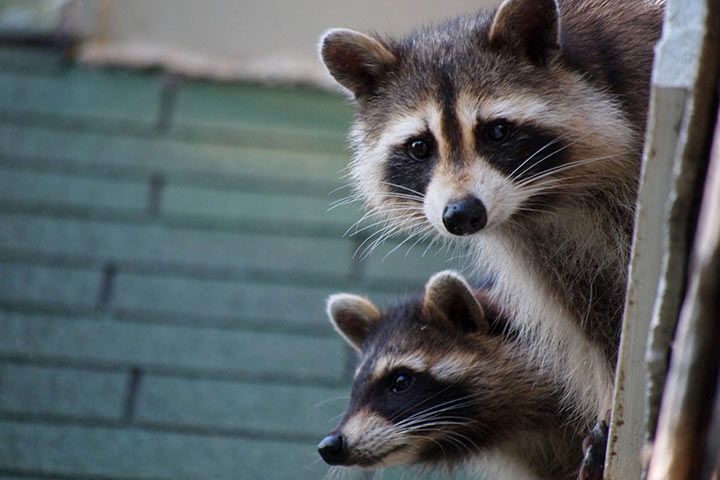
Senses and Abilities
They Are Finger Acrobats
Dogs can hold a bone firmly in place with their paws. Cats are a bit smarter and catch little animals with their “claw tools”. Or they open doors with their paws. But that’s just about everything they can do. Raccoons, on the other hand, are so skillful with their fingers that they can untie knotted shoelaces, open cages, steal coins from shirt pockets or even turn screw-nuts. Nobody and nothing is safe from raccoons!
They "See" With Their Paws
The Native Americans called the raccoon Arakun, which means „the one who scratches with its hands”. Actually its paws and their sense of touch are extremely important. The raccoon experiences two thirds of its world via its paws.
Intelligence
Raccoons Are Super Smart
Raccoons are known for their good memory, their enormous flexibility and their capability to learn very quickly. Behavioral scientist H. B. Davis took some raccoons and let them open complicated locks. They did their job just as well as rhesus monkeys. They opened 11 out of 13 locks in less than ten tries. As soon as they have conceived the solution to a problem, raccoons will not forget it for quite a while. They can keep information at the back of their mind for about three years.

Evolution and Origin
Where Does the Raccoon Come From?
Originally, the raccoon was at home in Central and Northern America. From there it came to Europe by ship. On the 12th April 1934, the raccoon made history: Forest ranger Wilhelm Freiherr Sittich von Berlepsch (what a name!) returned four raccoons to the wild at Edersee, Hesse, in order to enrich the local fauna. It has worked out: Meanwhile there are hundreds of thousands of raccoons living in Germany.
Enemies and Threats
The common raccoon and the crab-eating racooon are no endangered species. Only the cozumel raccoon is considered as "critically endangered" by the IUCN. It lives exclusively on the Caribbean island of Cozumel and is also called the pygmy raccoon.

Fun Facts
Puss, Puss, Puss!
Raccoons utter many different sounds: Sometimes they purr like cats, then they hiss, whistle, and growl. They also grumble, screech, ... and even neigh!
Raccoon Moon
Many stories of the Native Americans deal with raccoons. They believed that the little bears had magical powers because of their black “mask”. The Sioux even call the February moon “Raccoon Moon”.
The Raccoon Is Related To:
Animals in the Same Biome:
- Shrew
- Eurasian Eagle Owl
- Eurasian Jay
- Great Spotted Woodpecker
- Hedgehog
- Microbat
- Mole
- Mouse
- Rabbit
- Red Fox
- Red Squirrel
- Raccoon
- Wolf
- Watch Now on animalfunfacts.net:
 All About Hibernation
All About Hibernation














